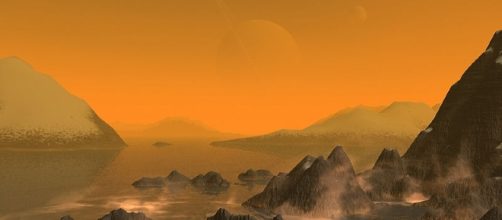It is less than two days for NASA's Cassini spacecraft to conclude with its Saturn mission. The probe has been collecting data and images of Saturn for more than a decade. Cassini has been one of NASA's most successful projects. The spacecraft has managed to travel across Saturn and its moons, including the largest moon named Titan.
On the 15th of September, Cassini will make its final goodbye by destroying itself like a meteor high into the atmosphere of Saturn. It has been an incredible journey for Cassini by providing scientists immense data and information from the ringed planet.
There has been no other probe that has studied and examined Saturn and its moons like Cassini.
Could there be life on Saturn's largest moon Titan?
NASA's Cassini has been visiting Titan almost every month for more than a decade. The probe has been in a deep relationship with the moon, and scientists have come to a better understanding of the planet and its atmospheres. The data collected has brought scientists to an understanding that Titan has a thick atmosphere. It is very different from all the other moons in the solar system, as none of those moons have an atmosphere that is so thick like Titan.
The finding of a thick atmosphere on Titan tells that there may be chances of life or possibilities of life to exist.
With the help of Cassini, researchers were able to go deeper into the study of Titan's liquid methane seas, lakes, and rivers. The atmosphere on Titan has nitrogen, and recently the spacecraft has observed the moon nearly 2.5 hours capturing intricate details and its unique yellow haze.
The probe has also captured images of landscapes on Titan's surface.
Some of these landscapes resemble like the ones on Earth filled with mountains, river deltas, and dry floodplains.
Titan's strange atmosphere
When compared to Earth, the temperature on Titan is extremely cold as it receives only 1 percent of sunlight. The temperature on the surface alone is minus 290 degrees Fahrenheit. Scientists discovered that the liquid methane flows on the surface, the methane evaporates from the lakes and seas, condenses, and then falls as rain.
It is the same as the cycle of water on Earth. The only difference is that the moon has methane and ethane oceans and lakes.
With all the collected data from the Cassini Spacecraft, scientists have enough that would last for many more years to continue further research. The probe will make a final plunge into Saturn's atmosphere on Friday. That will be a bittersweet memory for NASA and their successful Saturn mission.


